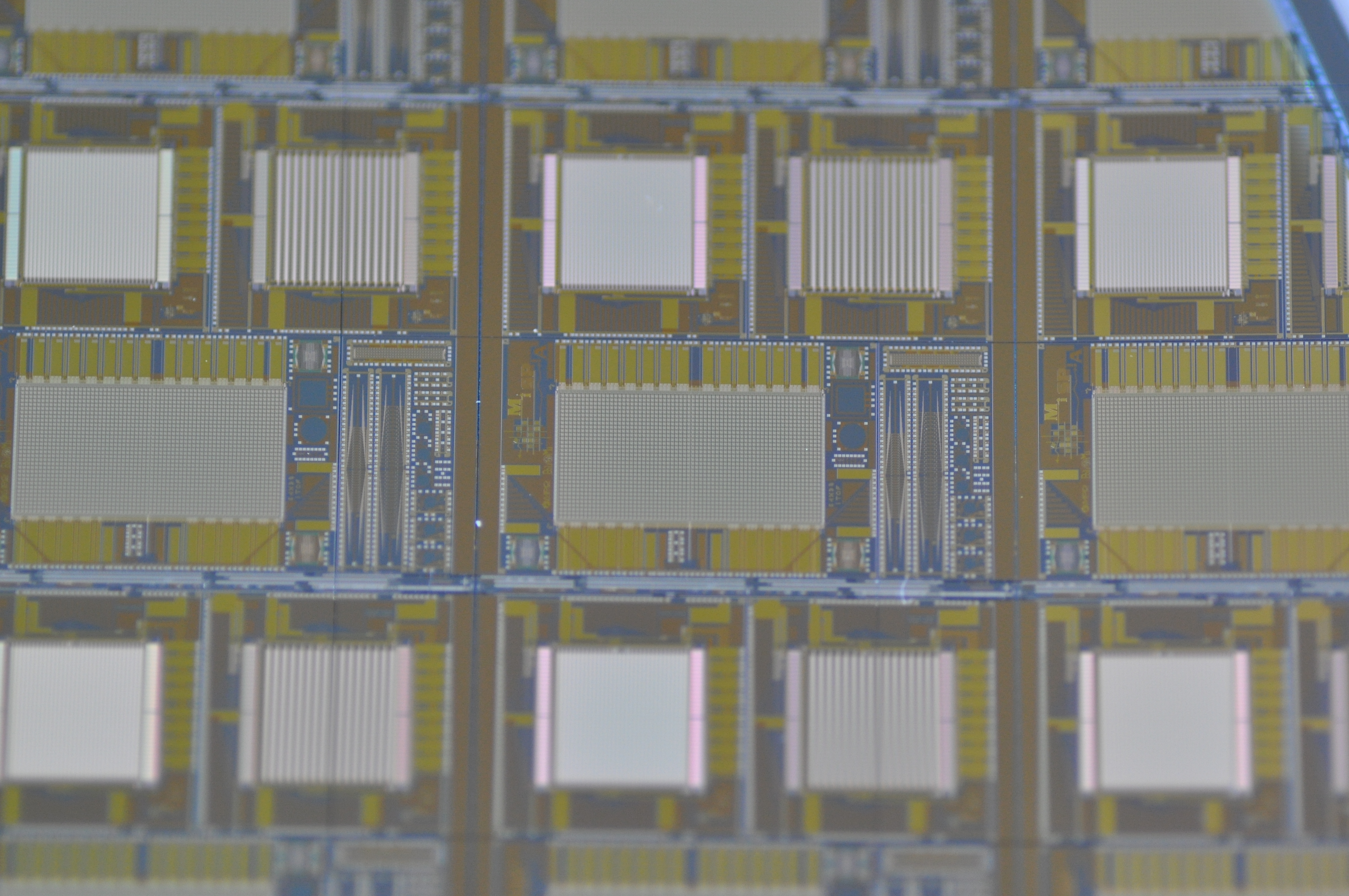The technological spectrum for high-performance CMOS image sensors
The technological basis for the extensive range of optical sensors is CMOS technology. Fraunhofer IMS has been developing and manufacturing CMOS image sensors for more than 30 years. Initially the standard CMOS process provided various photodiodes and enabled the first product developments, but later special optoelectronic components and process steps were developed that continuously improved the properties and versatility of the sensor solutions. Special diodes and detector elements such as
for various applications like X-ray, spectroscopy, time-of-flight, LiDAR or time-delay integration have been developed and integrated in the standard CMOS process. Furthermore, special process options such as
- Stitching
- UV-transparent passivation
- planarization
- colour filters
- microlenses
are available for product developments.
The 0.35µm CMOS technology installed at Fraunhofer IMS is qualified according to the automotive standard ISO TS16949 and therefore extremely stable and reliable. The integration of a new component into this process means extreme effort in development and qualification before product development can start.
A recently available technology basis for the optical sensors is the 3-D integration in the MST Lab&Fab of Fraunhofer IMS. The detector elements and the readout circuit are located on two independent chips, which are connected by a soldering or bonding process. This hybrid integration of "chiplets" takes place either as a chip-to-wafer or, for larger quantities, as a wafer-to-wafer process. The advantages are obvious: the two wafers or chips can be selected and optimized independently. For SPAD arrays, for example, this means that a compromise between "good SPAD properties" and "compact electronics" is no longer necessary. The SPADs can be optimized for the right wavelength and the electronics can be accommodated in smaller structure sizes on the smallest surface area. The 3-D integration technology is currently in the qualification phase.
With the technology portfolio available for optical sensors, Fraunhofer IMS is able to meet the highest customer requirements and offer application-specific sensors from the initial idea to pilot production.

